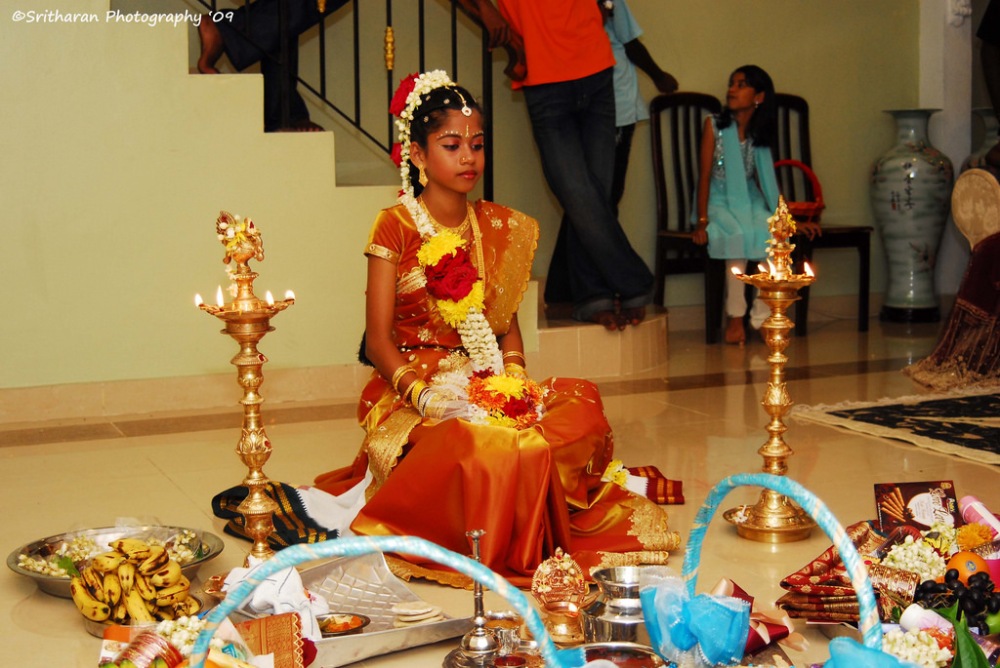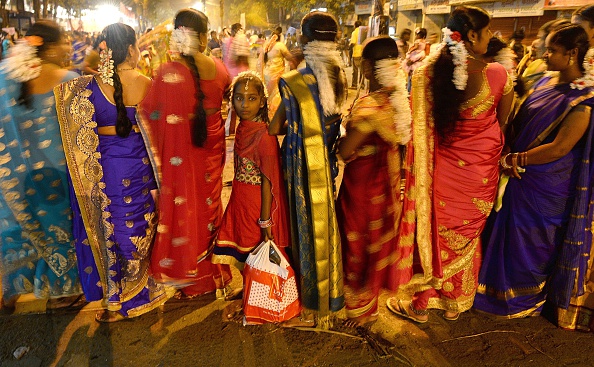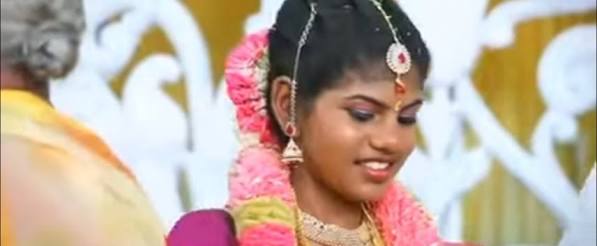I was sitting in my balcony drinking coffee when this girl all jolly and bouncy came out in her balcony and was saying, “I got it, I finally got it.” Cruised as to what she got I asked her, “what did you get?” she replied with sheer happiness, “my puberty”. I was a bit surprised I had never seen any girl at the age of thirteen or fourteen this happy for getting a period back at my home, they were in fact all pretty confused when they saw a spot or would have a hush orientation by their mothers. This was all new to me. When I went to ask her mother about all of this out of my curiosity, she explained that how the south India had old age traditions and customs to celebrate the first period of a girl.

To explain this whole tradition let’s start with the basic first, what is puberty?
Puberty is the certain age of a girl where she attains her maturity with her first menstruation cycle. It indicates the capability of the girl’s body for reproduction.
This tradition of celebrating a girl’s puberty is an age old tradition practiced in south India and by south Indian families for years now. With the reaching for the age of puberty girls would reach the marriageable age and so to announce this the family would celebrate puberty by this ritual in earlier times. But now this has just become a part of customs and traditions. In this celebration the girl is treated as a princess because she is the most important person right now and this all done for her so she gets all the attention.

As soon as she receives her first period she is bathed irrespective of the time she got the period, after this she is separated from the rest for her isolation period, some have this stretch for 16 days and some have this for 7 days. In this isolation period the girl has to live in a separate room with just a mat and eat drink their only. No men are allowed in this room. She has to live in isolation until the rituals of menstruation are completed.
During this isolation period the girl is served the most nutritional vegetarian food. The diet includes Ragi (One of the healthiest food in South India), eggs, urad lentils cooked in sesame oil. The reason of giving such a diet is also backed by beliefs like it would help in the girl’s pregnancy. This diet is undertaken to help strengthen the body for childbirth and also help in strengthening the pelvic bones of the girl. All food rich in vitamin E is to be offered, as this is the puberty vitamin. How? It helps strengthen the uterus walls. Some recipes that are common are:
- Amaranth seeds in a cup of raw milk is offered on the first day of period
- Parupu urundai are savoury balls of Toor Dal and Rice / Ragi, cooked separately, mixed and seasoned with garlic, onion, tomato and cumin seeds. Three balls for three meals of the day!
- Balls of raw rice flour mixed in jaggery, spiked with the flavour of cardamom and ghee, is another recipe for the pubescent.
- Ground Urad dal or fenugreek seed, cooked in sesame oil in slow simmering heat and served with jaggery or palm sugar syrup is another puberty meal.
- Black sesame seed powdered and mixed with cane sugar is offered frequently in this period, this is particularly considered rich in vitamin E.
- Dosa is also part of the ritualistic food, as it contains urad dal and rice.
- For non-vegetarians, raw egg yolk is offered to the girl, which is gulped down full, without breaking the yolk, with half a cup of sesame oil, daily, for fifteen days! I can’t even imagine how horrible this might taste – it is health that matters!

On 16t day or the 7th day after the isolation period is over the day of celebration comes into play and the girl is all dolled up like a bride. All the family relatives and friends are there to join in on the celebration. She is decked up in silk saree and jewellery and flowers just like a south-Indian bride. After the girl gets ready she is made to sit in the celebration, where some priest performs some rituals. Post the prayers and rituals are over the girl is again given a bath with a special water which is mixed with turmeric powder and neem leaves. After the bath the girl is again dressed up in a saree. Post these rituals she is a part of the celebration, where all relatives and friends give her gifts. Post all of this all the people have a huge feast. The whole celebration is dependent upon how the family wants to do it, big or small, like nowadays not all women wants to tell this information of coming of age to the whole world.
Well I have to say up until now I didn’t even knew about this type of celebration happened in India and now I feel kind of like two sides it’s nice that they celebrate the coming of a period but at the same time I feel awkward as well because the aim of this celebration is announce that the girl is ready to married. The fact is that depending on the different types of communities, the process of this celebration might vary and be a bit different. But at the end of all, the main purpose is to celebrate the coming of age for a girl for marriage.

Today is the 7th day and I saw all the rituals and everything and I am standing here watching her getting all excited about gifts and feel so proud to be an Indian, as living in India is like living in a storybook. You have so many rituals and customs to see and know about. We Indians are famous for listening to our hearts more than our heads. This is one reason why Indians hold their beliefs so tight even today. We have end number of rituals and celebrations which even half of the Indians don’t even know about.

Article By- Sakshi Sharma